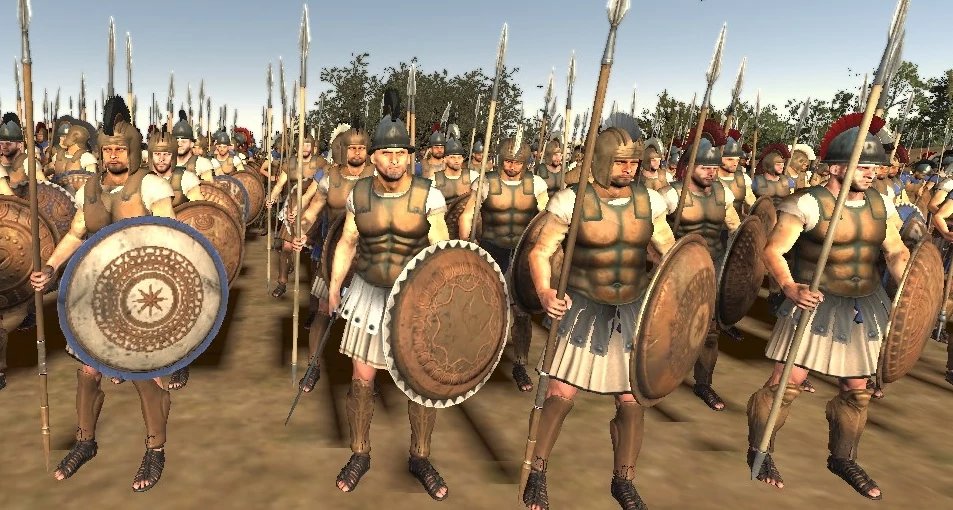

These belts were called “telamones” (τελαμώνες). The shield had at least one central handle for its holding by the warrior in battle, and one or more shoulder belts, in order to hang it on his back when not used. Notches also facilitated the hanging (suspension) of the Dipylon shield on the warrior’s back, in order not to restrict his elbows when he walked. In the middle of its surface, the Dipylon shield had two semicircular notches for the easier handling of the offensive weapons (spear or sword). It had a curved form in order to embrace the warrior’s body.

Despite its size, the Dipylon shield was light due to its materials. It was made of wicker and leather, without excluding further strengthening of wooden parts. It was a large and long shield, covering the warrior from chin to knees. The Dipylon shield is named after the Athenian Dipylon gate, where a number of pottery with depictions of that type of shield, was discovered. The shields of the Geometric period belonged to two main types: the “Dipylon” type shield and the “Herzsprung” type. The Geometric Period (11th-8th centuries BC) preceded the invention of the hoplite warfare and the hoplite phalanx (about 700 BC). In the interior of the hoplite shield, you can see the “antilave” ( «αντιλαβή », handle/handgrip), the “porpax” ( «πόρπαξ », fastener for the elbow) and the “telamons” ( «τελαμώνες », shoulder belts)/ (Paris, Louvre Museum) He is armed with a bronze cuirass, a hoplite sword and a hoplite shield of the Argive type. The most experienced hoplites were often placed on the right side of the phalanx, to counteract these problems.A vase painting depicting a hoplite, 5th century BC.
Hoplite shield armor free#
The weak spot on a phalanx was on the right, where the free arms were unprotected by shields. In battle, a phalanx would tend to drift to the right (as hoplites sought to keep behind the shield of their neighbour). At certain points, a command would be given to take a certain number of steps forward. The ranks behind them would support them with their spears and the mass of their shields gently pushing them, not to force them into the enemy but to keep them steady and in place. The first lines would stab at their opponents, at the same time try to keep in position.

A phalanx tended to be 8 rows or more deep, each row with a leader, and an officer who kept order in the rear. The phalanx, and hence the armour, was trained to work as a team.

The Lacedaemonian citizens (Sparta) were renowned for their lifelong combat training and almost mythical military prowess, while their greatest adversaries, the Athenians, were exempted from service only after the 60th year of their lives. They were expected to take part in any military campaign when they would be called for duty. In most Greek city-states, citizens got basic military training, serving in the standing army for a time. In later texts, the term hoplite is used to denote any armoured infantry, regardless of armament or ethnicity.Ī hoplite was usually a free citizen who got his own armour and weapons. The word " hoplite" comes from the type of the shield used by the soldiers. In a phalanx, each man's shield protected himself and also gave some protection to the right arm of the man on his left. They fought close together in what was called a phalanx formation. The shield has a curtain as a protection from arrowsĪ hoplite was a citizen-soldier of the Ancient Greek city-states. A hoplite by Alkimachos, on an Attic red-figure vase, ~460 BC.


 0 kommentar(er)
0 kommentar(er)
